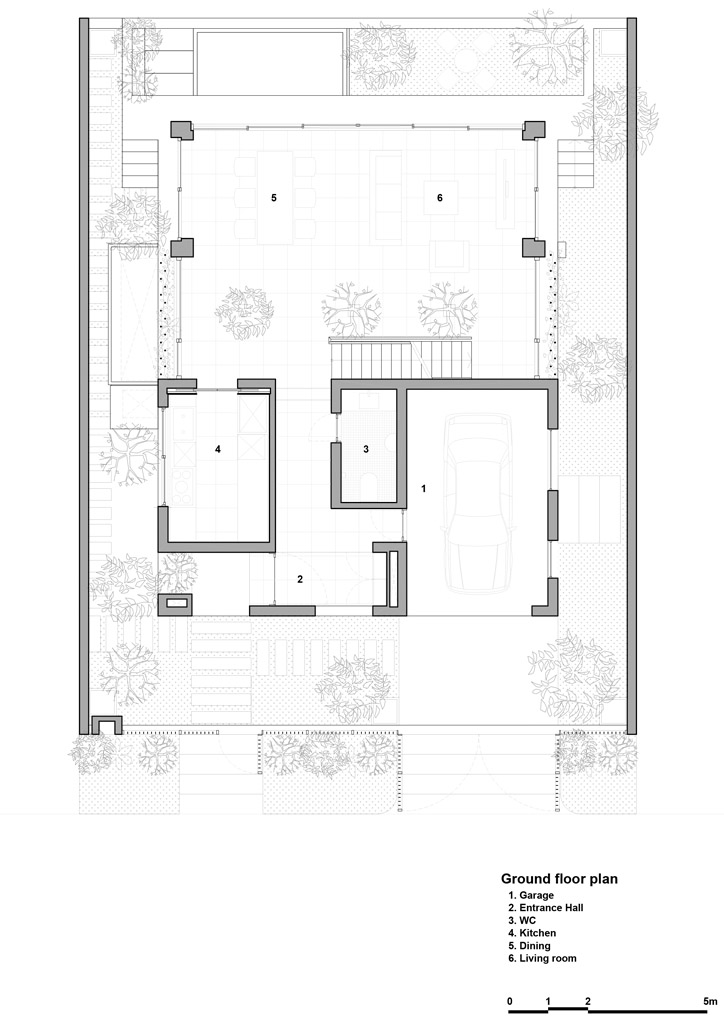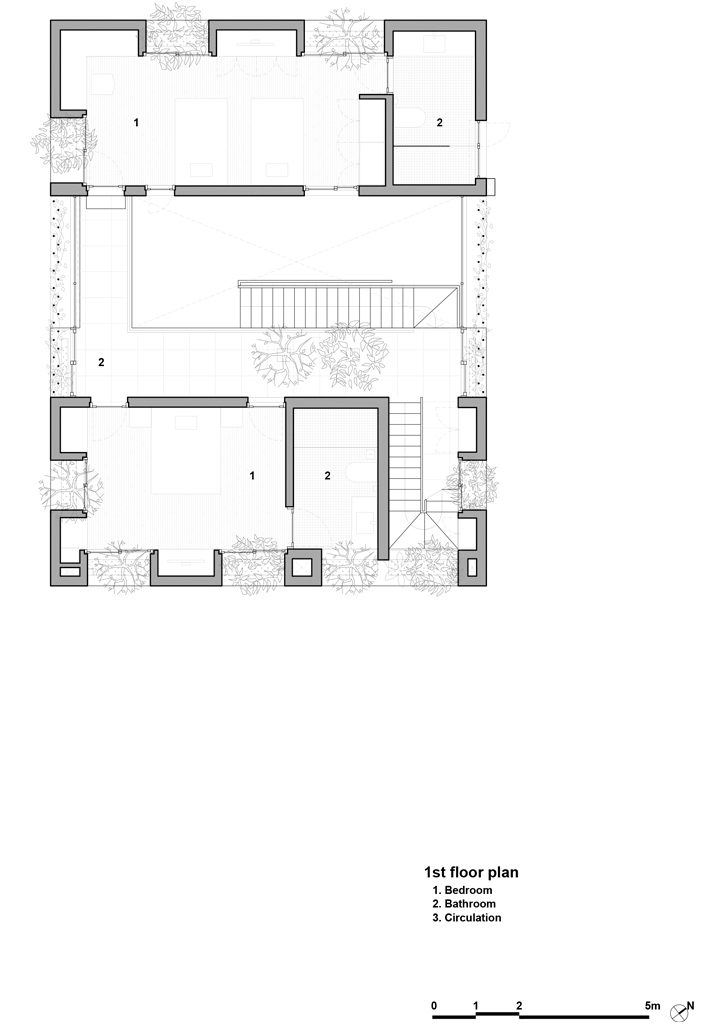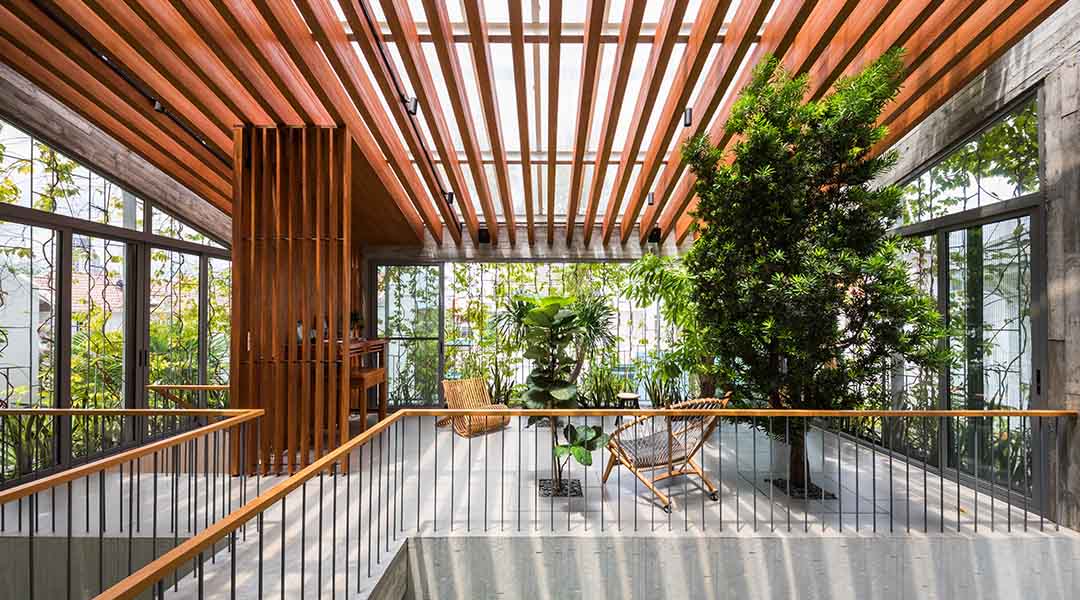
VTN Architects designs a house that embraces verdure
Located in a new residential area in Ho Chi Minh City, Vietnam, this residence introduces green spaces into a country that continues to lament the increase in its high-density urban area, and tackles consequential problems such as urban flooding, overheating, and air pollution, by becoming an extension of its environment through the integration of verdure in its interior spaces.

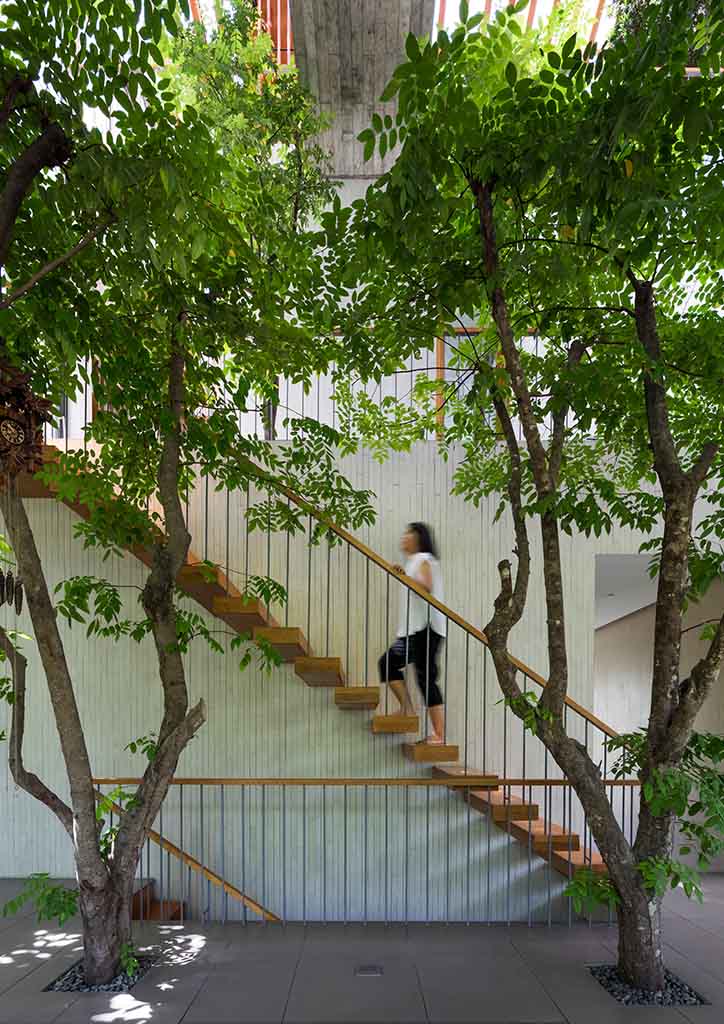
The Stepping Park House is situated in the center around a large void that diagonally crosscuts the three floors of the building, presenting a vast, light-filled interior. The volume is enclosed by large windows that are confronted by an ivy-covered metal grid. It fosters a series of interconnected spaces, including a ground floor living room that opens to an adjacent park, and a family room on the top floor that leads to a roof terrace. “Walking through the space, one will feel the wind moving from the living room to the top floor of the house, while the green facade eases the intense sunshine of the tropical climate. The model is a precedent for housing in tropical climates,” say the architects of the firm. All areas of the residence are filled with plants and trees that are embedded into pebble-lined panels. The void embodying the interior performs a functional purpose: to facilitate ventilation, to provide light, and to envelop the building’s circulation. It also includes a humble staircase that guides the visitor to a secret basement.
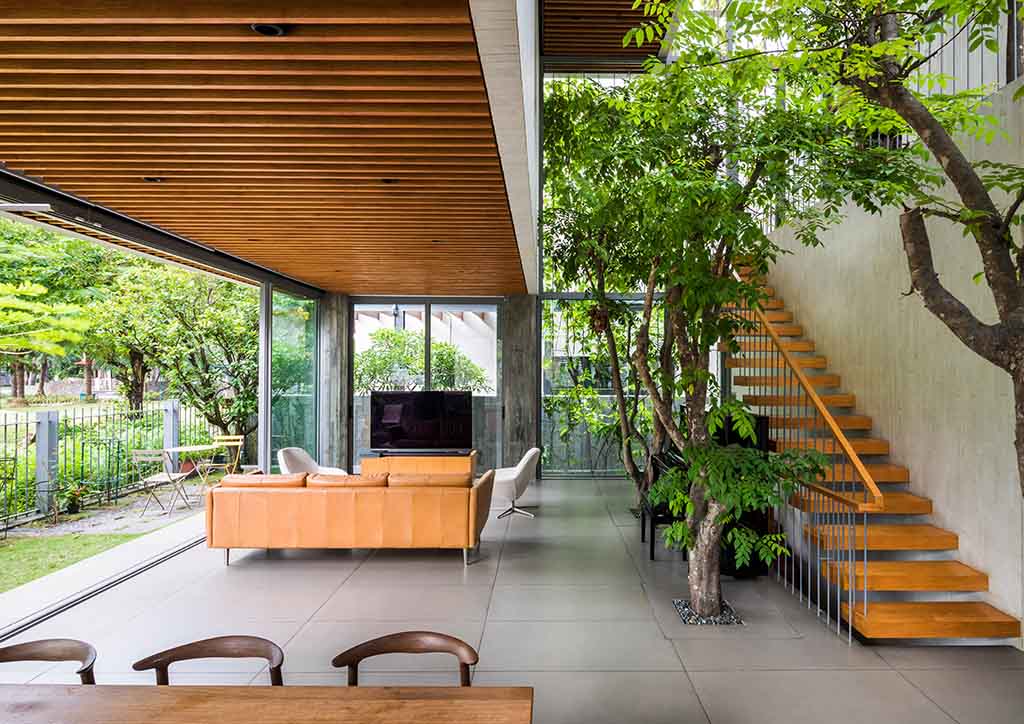
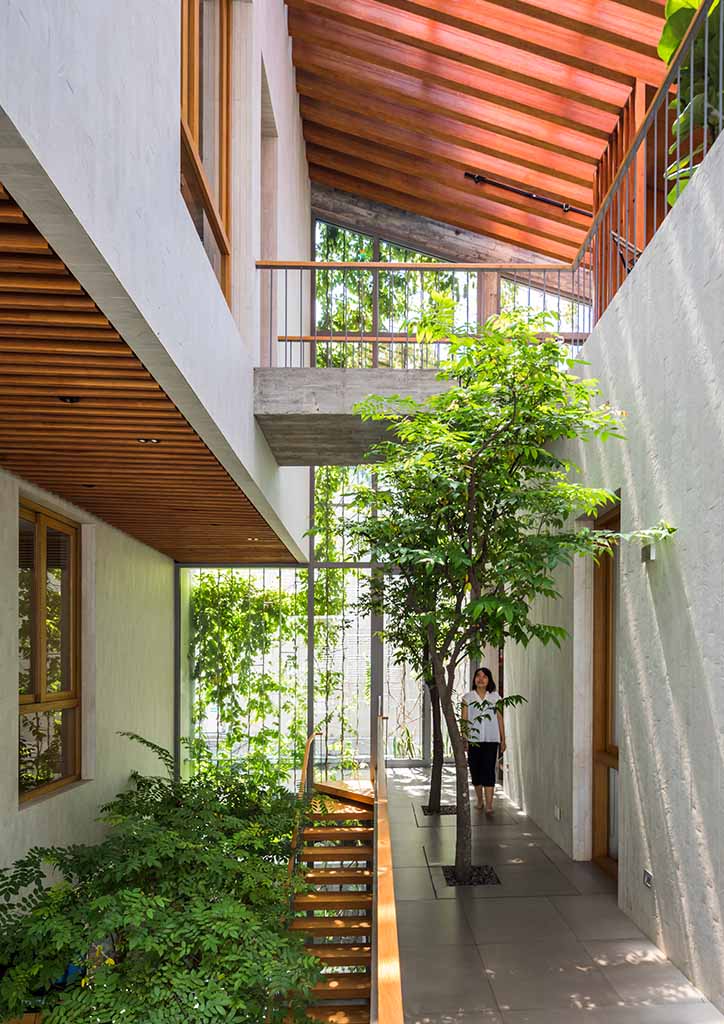
Bordering the void are a succession of solid volumes, which encompass the house’s private rooms, including three bedrooms and bathrooms. Each room displays deep set doors and windows, all confronted by trees that shade direct sunlight and cool the wind, all the while granting privacy and illuminating the spaces. The interiors are dressed with wooden furnishings and ceilings that enhance the house’s natural visual profile. Structural concrete elements are covered in local white stone, while the others are left exposed to parade a board-marked finish that furthers the visual impact. Alcoves scattered throughout the house are fitted with tailor-made furniture pieces by Vo Trong Nghia, the Vietnamese leading VTN Architects, including in the family room where wooden louvers on the ceiling extend down to form a desk. These provide a rhythmic shadowing that infiltrates to the ground level.
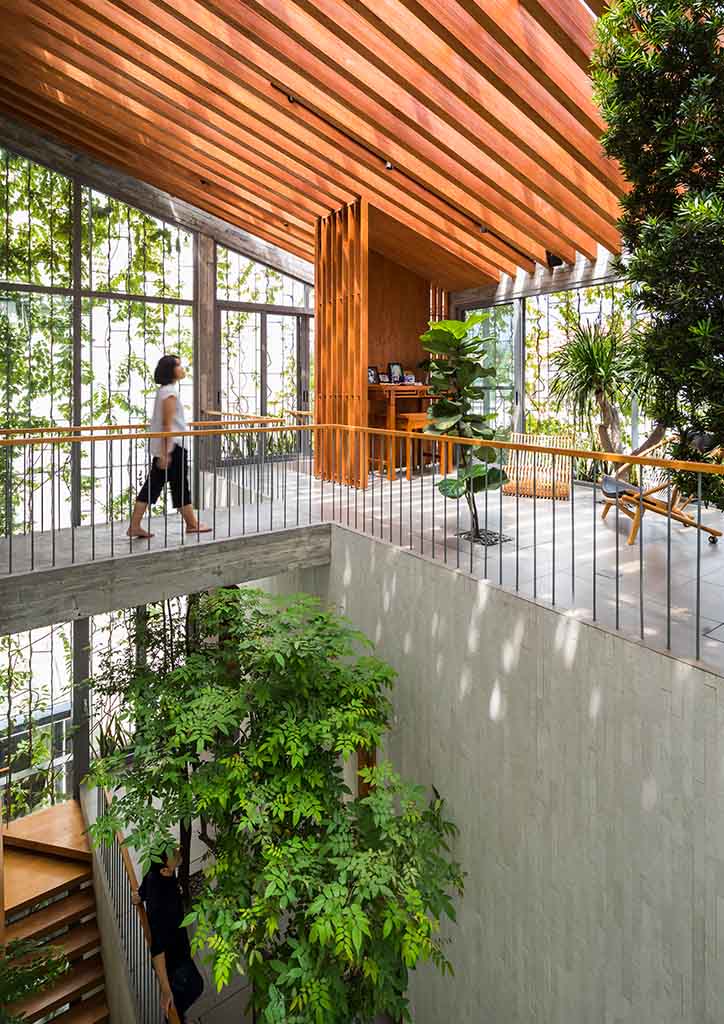
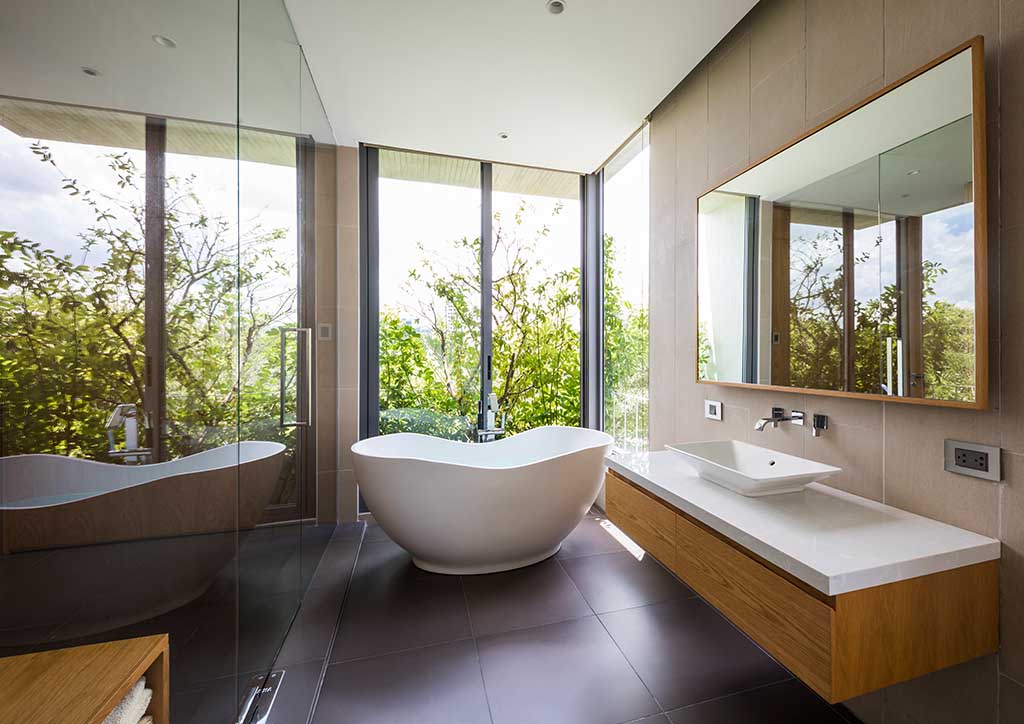
The house shelters a series of small gardens that help disguise a parking space situated on the ground floor of the residence. It adopts a similar aesthetic to a number of plant-filled houses designed as part of VTN Architects’ ‘House for Trees” scheme. Since the architecture firm was presented with the atypical opportunity of designing on a site next to a public green space, the Stepping Park House was then realized as a living extension of its surroundings. The verdant greenery of the park seemingly grows inside the house and occupies every aperture, saturating the interiors, thus, offering a sense of continuity.
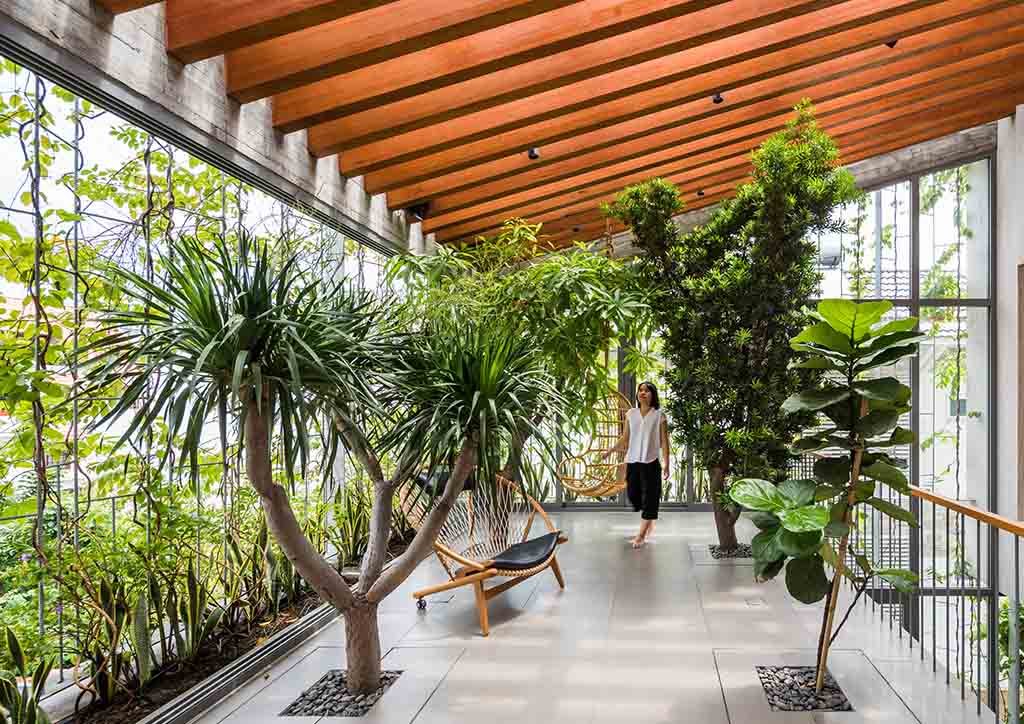

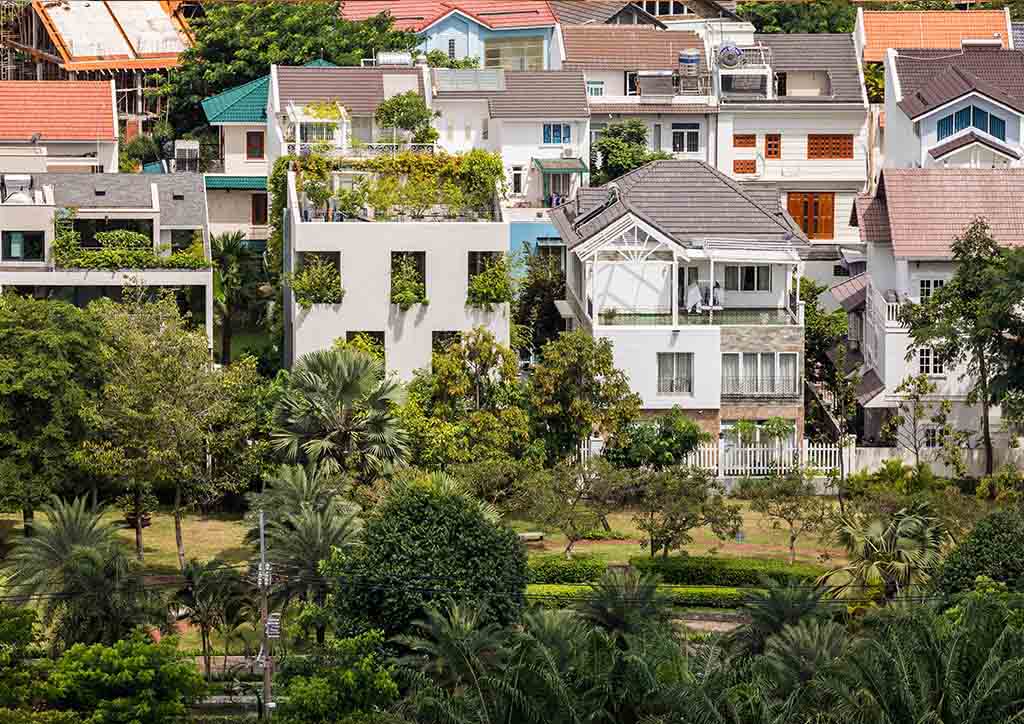
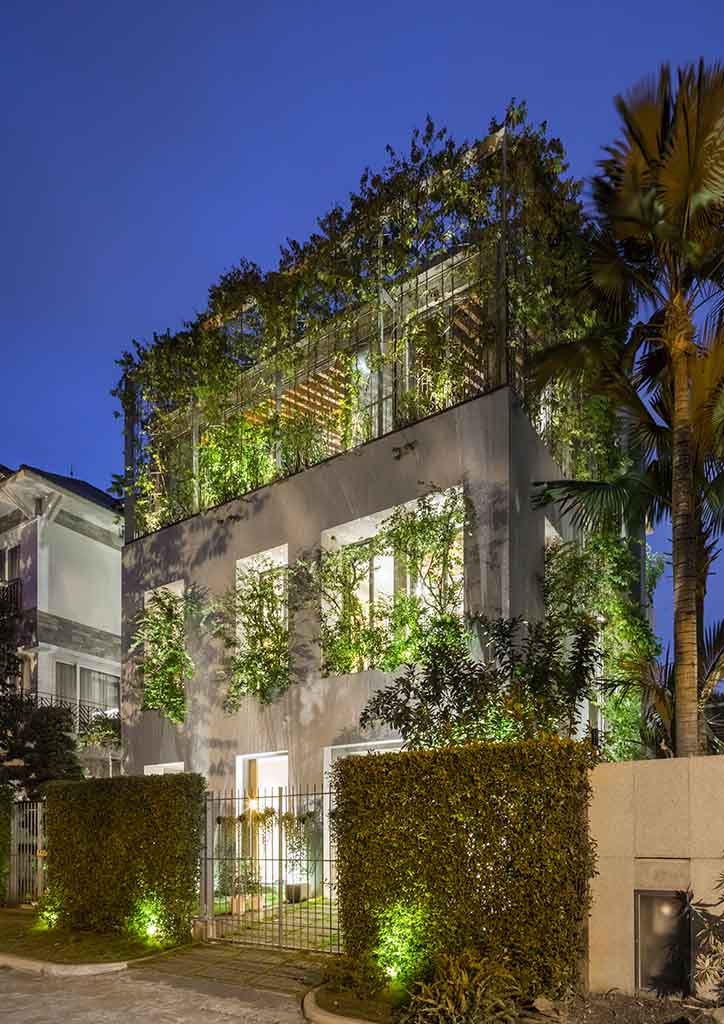
It is important to educate and remind the self of urbanization, which is an imperative process and one necessary to sustain human development. However, it also dumps negative impacts on the environment and biodiversity. To lessen these, it is found that the preservation of green areas is an effective solution. The shortage of green space in Vietnam is initiating environmental problems. Presenting an answer to these complications is an urgent challenge that architecture needs to address. VTN Architects consistently maximizes their capability when it comes to incorporating greens even in small houses, as proven by the Stepping Park House. The firm has extended its sincere effort by creating pockets of a park in the city and aiming for the green building to spread to the world.
The embrace is essentially, elementally, a gesture of landscape dwelling, and not just mere movements that propel the body towards personal intimacy. An embrace receives possible futures and captures the intensity of a moment. It is a phenomenology of elemental motions that carry the reminder that to be at home in various landscapes means to know what is needed to be embraced corporeally and incorporeally within the human, as well as in the exterior environments, the more-than-human folds of the world, such as in urban design and management, where green spaces are considered significant components regarding the satisfaction degree of urban inhabitations. By embracing verdure, one is able to bridge the gap between cityscape and landscape and regenerates an essential facet of our being.
This article first appeared in BluPrint Volume 1 2019. Edits were made for BluPrint online.
READ MORE: A forest-like entrance marks this Jakarta house by Tan Tik Lam
